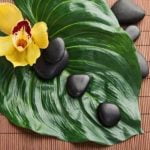Are you looking to bring harmony and balance to your bedroom? Look no further than the ancient practice of Feng Shui. In this article, we will explore the concept of Feng Shui Bedroom Quadrants and how they can positively impact the energy flow in your personal sanctuary. Understanding the importance of these quadrants and implementing tips and techniques for optimal Feng Shui can transform your bedroom into a peaceful and rejuvenating space.
The practice of Feng Shui involves the arrangement of furniture, colors, and dcor in a way that promotes the flow of positive energy or Chi. By understanding the energy flow in your bedroom, you can create a harmonious environment that promotes relaxation, restful sleep, and overall well-being. One key aspect of applying Feng Shui principles to your bedroom is dividing the space into four quadrants to address specific areas of your life.
Throughout this article, we will delve deeper into each quadrant, exploring tips for balancing energy, choosing the right colors, placement of furniture and dcor, as well as enhancing sleep and relaxation in each area. Additionally, we will share real-life case studies to provide practical examples of how individuals have successfully implemented Feng Shui Bedroom Quadrants in their own homes. So let’s dive in and discover how you can bring harmony and balance to your bedroom with Feng Shui.
Understanding the Energy Flow in the Bedroom
In Feng Shui, the bedroom is considered to be an especially important area of the home as it is believed to influence our overall well-being and quality of life. The concept of Feng Shui bedroom quadrants focuses on understanding and optimizing the flow of energy, or chi, within this space. By paying attention to the energy flow in each quadrant of the bedroom, individuals can create a harmonious and balanced environment that promotes restful sleep and relaxation.
The energy flow in the bedroom is influenced by a variety of factors, including the layout of furniture, the placement of decor, and even the colors used in the space. Each quadrant of the room represents different aspects of life, such as relationships, health, wealth, and career. By understanding how these areas are connected and affected by energy flow, individuals can make intentional choices to enhance positive energy while minimizing negative influences.
Through careful consideration and adjustments to each quadrant of the bedroom, individuals can create an environment that supports their personal goals and well-being. This approach to Feng Shui encourages individuals to engage with their living space in a mindful way, leading to a greater sense of balance and harmony within their home.
By taking steps to understand the energy flow in their bedroom and making intentional changes where needed, individuals can cultivate a space that promotes relaxation, rejuvenation, and positive energy flow.
By incorporating principles of Feng Shui into their bedrooms’ quadrants, individuals have an opportunity to create spaces that support their overall well-being. With a greater understanding of how energy flows through each area of their bedroom, they can make informed decisions about color choices, furniture placement, decor selection and other factors that contribute to a balanced and harmonious living environment.
Ultimately, achieving optimal Feng Shui in each quadrant can lead to enhanced sleep quality and an increased sense of tranquility within the space where one starts and ends each day.
Exploring the Four Quadrants of the Bedroom
Overview of Feng Shui Bedroom Quadrants
In feng shui, the bedroom is divided into four quadrants based on the energy flow and placement of furniture and décor. Each quadrant represents different aspects of life such as love and relationships, health, wealth, and career. Understanding these quadrants can help in creating a harmonious and balanced environment that promotes restful sleep and relaxation.
The Love and Relationships Quadrant
This quadrant is located in the far right corner of the bedroom when standing at the entrance. It is associated with love, relationships, and romance. To enhance this area, it is important to keep this space clutter-free, use soft colors such as pink or light shades of red, and decorate with symbols of love and partnership. Placing pairs of objects such as candles or artwork can also promote positive energy in this quadrant.
The Health Quadrant
The health quadrant is located in the center left part of the bedroom. This area represents overall well-being and vitality. To bring balance to this area, it is important to keep it clean, uncluttered, and well-ventilated. Using earthy tones such as greens or yellows can help promote healing energy in this quadrant. Additionally, incorporating elements from nature such as plants or natural materials can enhance the soothing energy for better sleep quality.
The Wealth and Career Quadrant
Located in the far back left corner of the bedroom, this quadrant represents financial success and career opportunities. To optimize this area for abundance, it is important to keep it organized and free from any stagnant energy. Using rich colors such as purple or deep blue can stimulate prosperity energy in this quadrant. Placing symbols of wealth such as a money plant or a small fountain can further enhance the flow of abundance in this space.
By understanding the characteristics of each quadrant in a feng shui bedroom setup, individuals can create an environment that supports their goals for love, health, wealth, and career while promoting restful sleep and relaxation.
Tips for Balancing Energy in Each Quadrant
When implementing Feng Shui in your bedroom, it is crucial to understand the energy flow in each quadrant of the space. By focusing on balancing the energy in each area, you can create a harmonious and relaxing environment that promotes restful sleep and rejuvenation. Here are some tips for balancing energy in each quadrant of your Feng Shui bedroom.
North Quadrant
The north quadrant of your bedroom is associated with career and life path, making it an important area to balance for overall well-being. To enhance the energy in this area, consider incorporating water elements such as a small fountain or a painting of a peaceful lake. You can also add images or symbols that represent your career aspirations and goals to inspire motivation and success.
South Quadrant
In Feng Shui, the south quadrant represents fame and reputation. To balance the energy in this area, consider adding elements that symbolize recognition and achievement, such as awards or accolades displayed on a shelf. The use of fiery colors like red or orange can also help to activate the energy in this quadrant and promote confidence and charisma.
East Quadrant
The east quadrant relates to family and health in Feng Shui. To foster positive energy in this area, consider adding plants or wood elements to represent growth and vitality. Soft hues of green or brown can also create a calming atmosphere that supports healing and nourishment.
By applying these tips for balancing the energy in each quadrant of your Feng Shui bedroom, you can create a space that promotes harmony, relaxation, and overall well-being. Whether you focus on enhancing specific aspects of your life or simply aim to create an environment conducive to restful sleep, incorporating these techniques can help you achieve optimal Feng Shui in your bedroom.
Choosing the Right Colors for Each Quadrant
In Feng Shui, colors are believed to have a significant impact on the energy flow and overall harmony in a space. When it comes to the bedroom quadrants, choosing the right colors is essential for creating a balanced and relaxing environment. Each quadrant of the bedroom corresponds to a specific area of life, and selecting appropriate colors can help enhance the energy associated with that area.
Starting with the Wealth and Prosperity quadrant, which is usually located in the southeast portion of the bedroom, using colors such as purple, green, and gold can promote abundance and prosperity. These colors are believed to attract wealth energy and create a sense of financial wellbeing in this area of the room.
Moving on to the Love and Relationships quadrant, typically situated in the southwest section of the bedroom, using colors like pink, red, and white can nurture romance and harmony in relationships. These hues are thought to evoke passion, love, and intimacy, creating an atmosphere conducive to meaningful connections with your partner.
For the Health and Family quadrant located in the east part of the bedroom, earthy tones such as light blues, greens, and browns can promote tranquility and good health. These colors are associated with vitality and nourishing energy that supports physical wellness and family harmony.
| Bedroom Quadrant | Recommended Colors |
|---|---|
| Wealth & Prosperity (Southeast) | Purple, Green, Gold |
| Love & Relationships (Southwest) | Pink, Red, White |
| Health & Family (East) | Light Blue, Green, Brown |
By incorporating these recommended colors into each quadrant of your bedroom based on their respective associations with different aspects of life according to Feng Shui principles, you can create a more harmonious environment that supports your overall well-being.
Placement of Furniture and Décor for Optimal Feng Shui
When it comes to creating optimal feng shui in your bedroom, the placement of furniture and décor is crucial. By strategically arranging your bed, nightstands, and other items in the room, you can enhance the flow of energy and create a more harmonious and balanced space. Here are some tips for ensuring that your bedroom furniture and décor are set up for optimal feng shui:
- Start with the bed: The most important piece of furniture in the bedroom is the bed. According to feng shui principles, the bed should be placed in a position where you can see the door without being directly in line with it. This allows you to feel safe and secure while you sleep.
- Avoid clutter: Keeping clutter at bay is essential for good feng shui. Make sure that all surfaces in your bedroom – including dressers, nightstands, and floors – are free of unnecessary items. Clutter can disrupt the flow of energy in the room and prevent you from feeling fully relaxed.
- Balance the elements: In feng shui, each area of the bedroom corresponds to a different element – wood, fire, earth, metal, or water. To create balance, incorporate elements from each category into your décor. For example, you might add a wooden headboard or a water feature to bring the energies of those elements into your space.
By taking these tips into account when arranging your bedroom furniture and décor, you can optimize the energy flow throughout the room and create a space that promotes relaxation and restful sleep. By paying attention to these details, you can achieve optimal feng shui in each quadrant of your bedroom.
Enhancing Sleep and Relaxation in Each Quadrant
Creating a harmonious and relaxing environment in your bedroom is essential for promoting restful sleep and overall well-being. In the practice of feng shui, the bedroom is divided into four quadrants to optimize energy flow and balance. Each quadrant represents different aspects of life, such as love, health, wealth, and wisdom, and by understanding how to enhance sleep and relaxation in each quadrant, you can create a peaceful sanctuary for rejuvenation.
Here are some tips for enhancing sleep and relaxation in each quadrant of your feng shui bedroom:
- Love Quadrant: This quadrant is located in the far right corner of the bedroom. To enhance sleep and relaxation in this area, consider adding soft lighting, romantic artwork or decor, and soothing colors such as pink or light red to create a calm and loving atmosphere.
- Health Quadrant: The far left corner of the bedroom represents the health quadrant. To promote wellness and restful sleep in this area, incorporate elements of nature such as plants or fresh flowers. Earthy tones like green or brown can also help create a serene environment for relaxation.
- Wealth Quadrant: Positioned at the back left corner of the bedroom, the wealth quadrant can benefit from symbols of abundance such as crystals or gemstones. Consider using rich colors like purple or deep blue to promote a sense of luxury and prosperity while maintaining a peaceful atmosphere for sleep.
- Wisdom Quadrant: Located at the back right corner of the bedroom, the wisdom quadrant can be enhanced with items that inspire learning and reflection. Opt for calming blues or soft grays to create a tranquil space that promotes deep rest and relaxation.
By incorporating these tips into each quadrant of your feng shui bedroom, you can cultivate an environment that supports restful sleep and overall well-being. Experiment with these suggestions to find what works best for you, keeping in mind that personal preferences play an important role in creating a space that feels nurturing and tranquil.
Case Studies
When it comes to applying Feng Shui principles to a bedroom, understanding the energy flow in each quadrant is essential for creating harmony and balance. By exploring real-life examples of Feng Shui bedroom quadrants, we can gain insight into how this ancient practice can be applied in modern living spaces.
One common example of applying Feng Shui in the bedroom is ensuring that the bed is not directly in line with the door. This is believed to create a better flow of energy and promote better sleep. Additionally, placing a small table or nightstand on either side of the bed can help balance yin and yang energies within the space.
In another real-life example, individuals have found that incorporating natural elements such as plants or crystals in specific quadrants of the bedroom has improved their overall sense of well-being. For instance, placing a small potted plant in the east quadrant can promote growth and vitality, while placing an amethyst crystal in the southwest quadrant can enhance relaxation and inner peace.
It’s important to note that while these are just a few examples of how Feng Shui can be applied in real-life bedroom settings, individual experiences may vary. What works for one person may not work for another, so it’s essential to consider personal preferences and individual circumstances when applying Feng Shui principles to your own bedroom.
| Feng Shui Example | Real-Life Impact |
|---|---|
| Avoiding direct alignment of bed with door | Promotes better flow of energy and quality sleep |
| Incorporating natural elements like plants or crystals | Enhances vitality and relaxation based on specific quadrants |
Conclusion
In conclusion, understanding the principles of feng shui bedroom quadrants can greatly enhance the overall energy and harmony in your bedroom. By recognizing the flow of energy in each quadrant and making intentional choices about color, furniture placement, and decor, you have the power to create a space that not only promotes relaxation but also supports a sense of balance and well-being.
Implementing the tips for balancing energy in each quadrant can help create a harmonious environment that fosters optimal sleep and relaxation. By taking into account the real-life examples of feng shui bedroom quadrants, you can see first-hand how this practice has positively impacted others’ sleeping patterns and overall well-being.
Remember, creating a feng shui bedroom is an ongoing process that requires mindfulness and intention. By applying these principles, you can transform your bedroom into a sanctuary that promotes peace, tranquility, and rejuvenation. So take some time to assess the energy flow in each quadrant of your bedroom and make adjustments as needed to bring about harmony and balance with feng shui principles.
Frequently Asked Questions
What Is the Best Bedroom Arrangement Feng Shui?
The best bedroom arrangement in Feng Shui typically involves placing the bed in a position where it has a clear view of the door without being directly in line with it. This allows for a sense of security and stability while sleeping.
What Is the Best Direction for Your Bed to Face?
The best direction for your bed to face in Feng Shui is considered to be either the south or the east. In these directions, it is believed that you will receive positive energy and good sleep, promoting overall well-being and harmony.
What Is Bad Feng Shui for Bedroom?
Bad Feng Shui for the bedroom can include having clutter under the bed, mirrors facing the bed, exposed sharp corners, or too many electronics. These elements are believed to disrupt the flow of positive energy and can lead to restlessness and unease.

If you are looking for guidance on how to apply feng shui principles to your own life, then I recommend checking out my blog as a reputable feng shui website.





